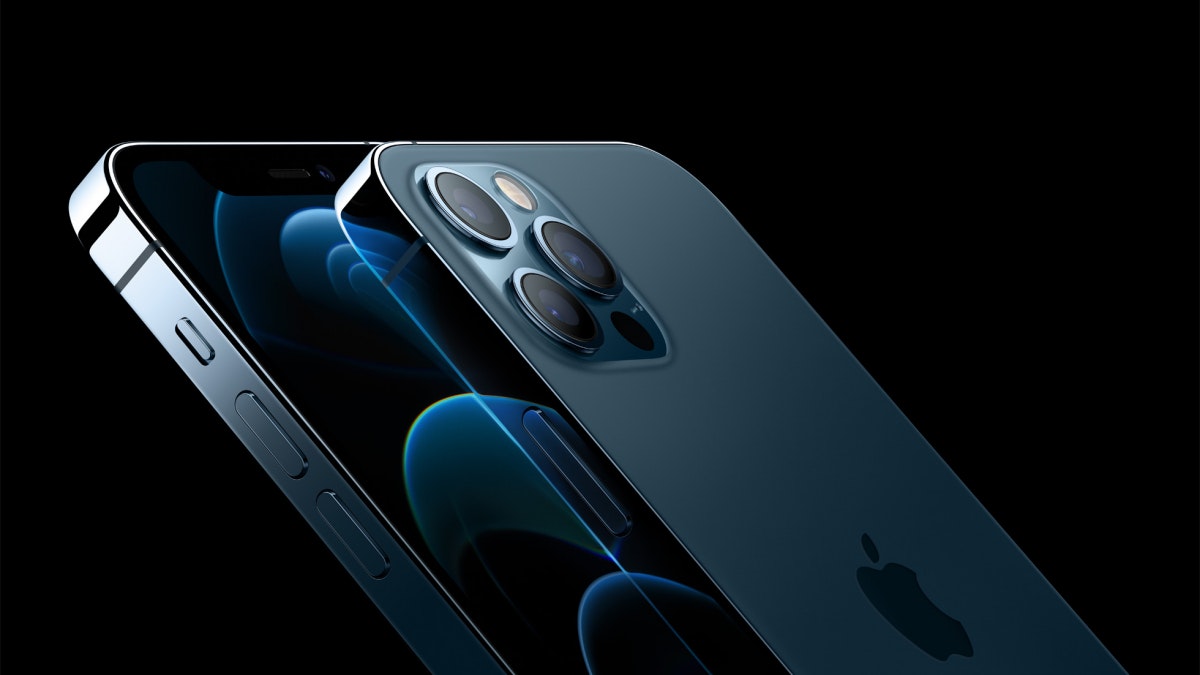What we think we know about Apple’s next generation of smartphones
No time right now?
Apple’s next-generation iPhone, dubbed either the 12s or 13, is still a few months away. Nevertheless, interesting details are already circulating on the Internet. Among other things, the return of Touch ID is to be expected – but different than before.
With the four iPhone 12 models, Apple published a major redesign in 2020. The devices, the appearance of which with their angular housings is based on classics such as the iPhone 5, came up trumps with a better camera, partly larger batteries and different display diagonals. In addition, Apple introduced the new Magsafe feature with them, which can be used not only for inductive charging, but also for attaching accessories. For the 2021 generation of models, according to recent reports, less revision of the design is in demand, instead it seems to be a new S-Class again, which should shine through improvements in detail. So the next generation of iPhone can be categorized as a better iPhone 12.
Bloomberg’s insiders cite the Covid-19 pandemic, which has slowed down Apple’s work, as the cause of the minor upgrade, which corresponds to about a step from iPhone X to iPhone Xs. Still, the upcoming iPhones seem to have some exciting features.
Contents
iPhone 13 again in 4 sizes – with Touch ID as a highlight?
In 2021, Apple is likely to use four different iPhone variants again, as it did for the first time last year. Accordingly, we can rely on a model with 5.4 inches, two with 6.1 and another with 6.7 inches, whereby two of them should be located in the Pro series. You think so Mark Gurman from Bloomberg, who is known for his excellent relationship with Apple informants, the new iPhone models will correspond to a gentle facelift.
One of the highlights that Apple’s developers are working on is the return of the Touch-ID fingerprint sensor, which has been successively replaced in almost all models with the iPhone X (test) against the 3D face recognition Face-ID. Only the cheap iPhone SE (2020) can still do without. In contrast to the iPhone SE, which has its fingerprint sensor installed below the screen, the new generation of Touch ID should be integrated into the display, as is now the case with many Android smartphones with OLED screens. This allows Apple to keep the narrow frame around the display. In addition, iPhones with Touch ID can also be conveniently unlocked with mouth and nose protection.
Many manufacturers of Android smartphones offer devices with display fingerprint readers – this year Apple could join them with the iPhone 13 (or iPhone 12s). (Animation: t3n.de)
Apple is integrating a new unlocking function for its iPhones with iOS 14.5, with which the device can be unlocked via Apple Watch – this makes perfect sense in many places, especially in Covid-19 times with mouth and nose protection mandatory in many places – the return of the fingerprint sensor should be a welcome addition to 3D face recognition for many.
Despite the alleged return of Touch ID, Apple has no plans to crush facial recognition. The front sensor phalanx could, however, be made a little smaller.
– Ice universe (@UniverseIce) October 7, 2020
iPhone 13 with 120 Hertz promotion display not excluded
The fingerprint sensor might not be the only exciting new feature. Because after Apple had apparently canceled the 120 Hertz display planned for the iPhone 12 after clear indications, it should at least move into the Pro versions of the 2021 generation.
Like the portal The Elec reports, Apple could use Samsung’s new LTPO screens that are already installed in the Galaxy S21 and one by 16 percent have improved energy efficiency than previous solutions. It is believed that Apple did without a 120 Hertz display for the iPhone 12 in favor of a better battery life.
In the Android world, displays with 90 to 144 Hertz are standard, especially in the upper class. Apple would be lagging behind in the iPhone segment with the technology; the iPad Pro models have had this technology, which Apple calls Promotion, on board for a while.
iPhone 13: Improved camera also for non-Pro models
Apple had upgraded the cameras in its iPhone 12 series, but the biggest update was given to the Pro Max version with its sensor shift image stabilization. If you believe a report from South Korea from ET News, this stabilization, borrowed from DSLR photography, is to find its way into other models, at least the smaller iPhone 13 Pro, whereby some industry insiders even assume that the function will affect the entire lineup could be expanded.

All iPhone 13 models may have sensor shift stabilization. (Screenshot: Apple)
With sensor shift stabilization, the sensor is stabilized and not just the lens, as is usual with smartphones. Low-light recordings should be free of blurring even with a two-second exposure.
It is also expected that the Pro models will continue to have three camera sensors installed on the rear, while the cheaper models could again have two main cameras plus the lidar sensor previously reserved for the Pro models. The aim is to make augmented reality functions available to a wider audience. We remember: Tim Cook thinks this technology is the next big thing.
The ultra-wide-angle camera is also to be improved: The five-lens element with f / 2.4 aperture built into the iPhone 12 should be compared to a seven-P lens element with f / 1.8 aperture be replacedthe analyst Ming-Chi Kuo reports. The larger aperture should lead to significantly better performance in adverse lighting conditions. Apart from small optimizations, the analyst does not expect any significant upgrades of the iPhone cameras until at least 2022. Nevertheless, Apple could increase the camera quality through software improvements. For even better performance, there will be a new processor developed in-house, which will probably be named A15 Bionic.
iPhone 13: A version completely without connections?
Rumors have been circulating for years that Apple wants to get rid of all connections on its iPhones. After the audio jack, the Lightning port could also believe in it this year. The reports alongside Mark Gurman also the leaker John Prosser. Prosser said in 2020 that Apple would rather cut all ports completely instead of switching from Lightning to USB-C. The iPhone X from 2018 would almost have been connected without a connection. However, since wireless charging was even slower than cable charging at the time, one of the reasons why one would have decided against it. At least one of the upcoming iPhone models could be completely free of ports, it is said.

Prosser assumes that the 2021 iPhone could be equipped with a Smart Connector. But he rules out pen support. (Photo: 9to5 Mac)
With the magnetic charging solution Magsafe, Apple has already ensured that the iPhone 12 can also be reliably charged wirelessly, although the charging power of a maximum of 15 watts with compatible charging pads is not particularly fast. But that can still change, especially since the competitors are already implementing wireless charging with up to 50 watts.
We can not only assume pure wireless charging for the iPhone in 2021, data transfer between devices could also be faster. At least there are indications that Apple will integrate the latency-free WLAN standard 802.11ay into future smartphones. With the iPhone 11, Apple had also already introduced a U1 ultra-broadband chip, which is described as a GPS for the living room and which should bring new uses over time.
Apple’s next generation of iPhones should be presented – if not slowed down again by the corona pandemic – possibly again in the traditional way in September. In 2020, Apple only presented its iPhone 12 models in mid-October because of the corona pandemic. Before that happens, Apple still has a full first half of the year ahead of it, which, in addition to new Macs, could perhaps even produce a larger iPhone SE. Apple’s tracking gadget Airtags should finally make it onto the market.
More on this: Macbooks, iMacs with redesign and more: Everything Apple could present in the first half of 2021



